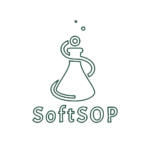A job description is more than just a formality—it’s one of the most important documents in any workplace. It provides the foundation for recruiting, training, performance management, compliance, and organizational growth. When written well, a job description communicates clear expectations to prospective hires while aligning current employees with the company’s mission, values, and performance standards.
Why Job Descriptions Matter
1. Clear Expectations
A detailed job description outlines duties, responsibilities, and performance standards. Employees know exactly what is required of them, reducing confusion and increasing accountability.
2. Recruitment and Hiring
Well-written job descriptions attract qualified candidates by presenting an accurate picture of the role. They also keep recruiters and hiring managers aligned on the essential skills and qualifications.
3. Legal Protection
Documenting expectations protects employers against disputes by serving as evidence in performance-related or termination cases.
4. Performance Management
Job descriptions provide measurable benchmarks for performance reviews, helping managers fairly assess employee effectiveness.
5. Career Development
For employees, job descriptions highlight required skills and pathways for growth, guiding both professional development and succession planning.
Core Components of a Job Description
A comprehensive job description typically includes:
- Job Title and Summary – A clear title and brief overview of the role’s purpose.
- Responsibilities and Duties – Specific tasks, written with action verbs and prioritized by importance.
- Skills and Qualifications – Required education, certifications, technical expertise, and preferred experience.
- Work Environment and Conditions – Description of the physical setting, demands, and potential hazards.
- Reporting Structure – Who the role reports to and supervisory responsibilities, if any.
- Compensation and Benefits – Pay range, bonuses, benefits, and other incentives (if appropriate to disclose).
- Company Culture and Values – What sets the organization apart and how the role contributes to its mission.
Best Practices for Writing Job Descriptions
- Be Specific but Concise – Use measurable responsibilities instead of vague statements like “handles tasks as needed.”
- Use Inclusive Language – Write to attract diverse talent and avoid unintentional bias.
- Review Regularly – Update job descriptions to reflect evolving responsibilities and business needs.
- Balance Expectations with Opportunities – Highlight not just what the company requires, but also what the candidate will gain (training, advancement, workplace culture).
Practical Example
Take the role of Area Manager, Sanitation. A strong job description wouldn’t just list shifts and cleaning duties—it would also emphasize leadership expectations, technical qualifications such as HACCP or SQF certifications, and the company’s dedication to food safety. Including career growth opportunities, training, and benefits transforms the job description into both a hiring tool and an internal management resource.

